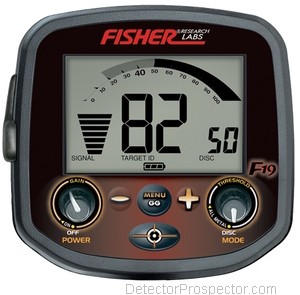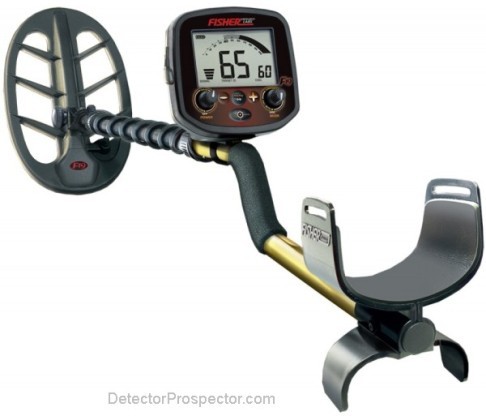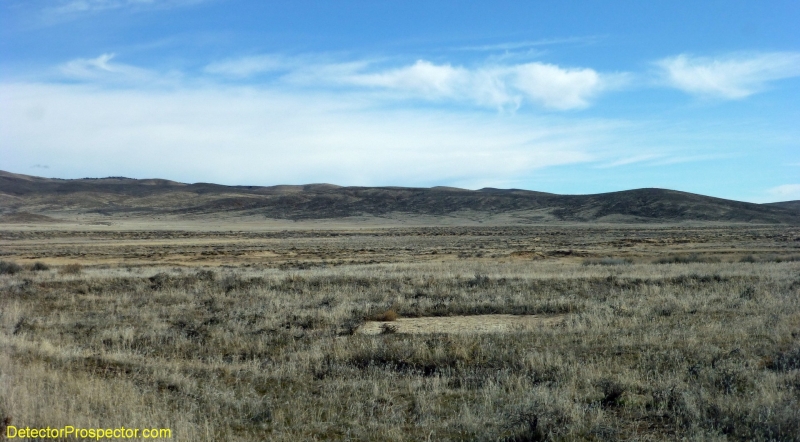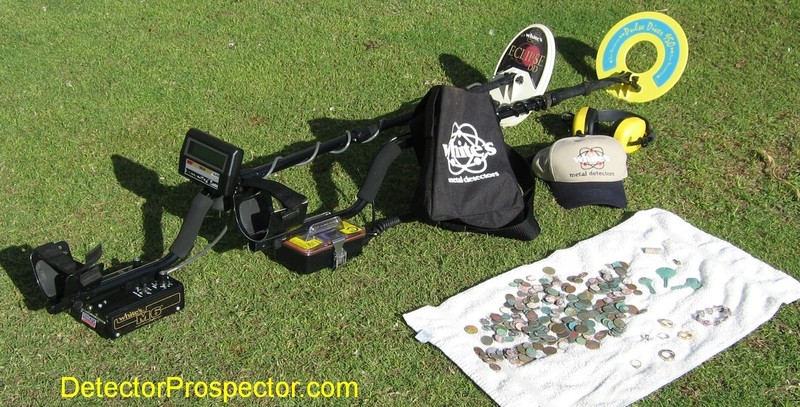-
Posts
19,761 -
Joined
Content Type
Forums
Detector Prospector Home
Detector Database
Downloads
Everything posted by Steve Herschbach
-
The current Time Ranger Pro is based on the old Bounty Hunter "muffler" design. I suspect it is more expensive to make than the newer pod designs and so FT will discontinue all the old mufflers and replace with Fisher models at lower prices. Sometimes a move like this means actual new models coming though with FT that's always a bad bet. Still, maybe new VLF machines coming at Fisher? One can always hope. It has seemed to me they can't just be hanging their hat on the new PI... they need something to go up against Equinox.
-
Bounty Hunter Time Ranger Pro Data & Reviews First Texas started with Bounty Hunter, then acquired Fisher and Teknetics to attract upper end detectorists who have tended to shy away from the Bounty Hunter name. Teknetics has been fading and is turning into the First Texas "direct to the customer" outlet. Fisher still carries the water for the higher end professional product, which eventually shifts to Bounty Hunter when it's end of life is approaching at Fisher. Looks like that is what is happening now with the Gold Bug Pro. I'll be surprised if this is anything more than a label change. Nice looking detector though. I really liked the Gold Bug Pro and have toyed around still with getting a G2+ or F19 as the prices keep coming down. The machine really works well, as EL NINO77 notes great ferrous handling/separation, and as impervious to EMI as any detector I have ever run. Nice loud speaker, simple controls. Great low conductor performance and ok on high conductors. If this is a F19 variant I will keep an eye on it. No rush as the whole First Texas 19 kHz lineup has to shift lower to become their new entry level product in face of what other companies are doing. Time is in our favor now for waiting for further price decreases. Fisher F19 metal detector
-
Finally found it. The technical term is “elutriation”. Elutriation is a process for separating a mixture of minerals into two or more products and utilizes the difference in settling velocity between particles to effect this separation. The link below has a manual that starts out all technical but the tells you how to build a simple device with a 55 gallon drum or I assume 5 gallon bucket that would work better than our $99 device above. From https://scholarworks.alaska.edu/handle/11122/1149. This manual addresses the design and fabrication of an elutriation system for the separation of coarse heavy minerals from waste rock. Elutriation is a process for separating a mixture of minerals into two or more products and utilizes the difference in settling velocity between particles to effect this separation. An upward flow of water runs countercurrent to the material flow in a hollow elutriation column. Particle separation is affected by particle density, size and shape and the upward water velocity. It was felt that the design and demonstration of a low cost, functional and efficient unit for the concentration of coarse, heavy minerals would be of benefit to the placer mining industry. Industrial efficiency can be improved by the additional recovery of byproduct heavy minerals with market potential. Elutriation provides an inexpensive method for processing +1/4 inch, sluice box concentrate to recover by-product heavy minerals. Elutriator design emphasized the use of materials which are inexpensive and readily available to the average placer gold mining company. The design also incorporated concentrate storage and shipment functionality into a detachable section of the elutriator. Design is based on the construction of a prototype unit and testing of the unit for coarse cassiterite (Sn02) recovery efficiency. Laboratory testing utilized 3/4" x 3/16" sluice box concentrate from Shoreham Resources Ltd's Cache Creek Mine, Tofty, Alaska. Following laboratory testing, the elutriator was field tested on-site in September, 1990. Both laboratory and field testing were highly successful. The elutriator proved to be a simple, robust concentrator for this application and produced tin recoveries and grades in excess of 99% and 55% respectively. Field feed grades to the elutriation unit were approximately 26% tin.
-
You know what, for $99 I like it John. Most stuff like this is way overpriced. This is a variation on the classic but rare vertical recovery column; I will find some references and post later. The key here is the screening is critical, no mixed sizes. As far as how good this one is the little surges are concerning, they indicate an unevenness of flow. A perfect design has a vertical column of water moving upward with no surging. This has a very small area, barely enough to be called a vertical column really, and the surging would indicate some possibility of blowing out finer gold. I’m sure it’s fine for anything of a coarser nature. The main thing is this does not separate the gold, it just is a first run to create a super concentrate. So like reduce a bucket of light concentrate to a few cups of concentrate. A gold wheel can take you from the bucket to relatively clean gold, not perfect, some loss, but good for large dredges in particular. A gold bowl or a miller table like you have is a better device for working the actual super cons. For taking a large volume, like buckets of dredge or sluice results down to a super concentrate I’d personally prefer some of the little mini sluice concentrators over this device. Like the Gold Cube or Keene Super Concentrator. A classic vertical column goes like this. Imagine a piece of 4” PVC a foot long sitting on end. At the bottom is a fine sieve. Water is forced through the sieve to rise through the tube in a very smooth flow that can be calibrated by increasing or decreasing the flow. The material is carefully screened and added to the tube. The light material rises up and out and the heavies collect at the bottom. The problem of course is the heavies build up and cover the bottom, requiring constant cleaning. So a bright boy added a pulsator that made the accumulated concentrate jump up and down and stay loose. And now you know how the jig was invented! Still neat and simple for $99 though. My real concern is it might blow out the super fine gold. From the eBay page: Regular Quicksand Gold Concentrator Made in the U.S.A. Superior Gold Recovery, Doesn't need to be level Run 1/8 inch Material or smaller as Fast as you can scoop Pump not included The Quicksand Gold Concentrator was developed to get concentrates or screened material down to a Super Concentrate faster that other equipment. This is not a blue bowl, so don't run it like one. Set up the Quicksand in a tub to recirculate the water or on the bank with the pump in the water. 500gph 12 volt bilge pump works the best for speed and recovery. Cleanout the Quicksand by turning it over a pan or tub and turn on the pump to wash out material. Then Pan out the cups of Super Concentrate. Made in the U.S.A. by R.C.M. Ent and US Prospector.
-
Excellent finds Chase, and you worked for them. Good for you!
- 13 replies
-
- xp deus
- minelab gpx
-
(and 1 more)
Tagged with:
-
Upper right > account settings > display name. You can make up to three changes in a 30-day period if you want to keep people guessing! The change is retroactive to all prior posts.
-
The Simplex really is so much detector for so little money it’s going to be the default answer to lots of questions going forward. Don’t know if you like detecting, don’t know what you need, can’t decide what to do? Just get a Simplex and it will all sort out. Anyone that can’t afford $250 just to give it a go probably needs to save their money for more important things anyway. In a couple months you will be able to get used ones with remaining warranty for under $200. I may pick one of those up because.... well, why not?
-

Research Into Gold Nugget Hunting
Steve Herschbach replied to ResearchNugget's topic in Detector Prospector Forum
Drive by poster. I guess if my questions are not worth the effort neither are yours Mr. Nugget, but thanks anyway! Too bad really as you would have learned a lot more engaging with us. The idea of a mars rover wandering around digging nuggets by itself is nice, but I know if I did that somebody is going to see it and load it plus the gold up in their pickup and be gone with it. Nice fantasy though. Maybe with radar enabled gatling gun perimeter defense system? -
Nice going Norm!
-

Well, Eight Days In Nevada Produced No Gold....
Steve Herschbach replied to Jim in Idaho's topic in Detector Prospector Forum
Gee Jim, I'm sorry you did not do better with the gold. Sadly the nuggets are not growing back as fast as they are being found. Back in the 80's and even 90's we heard a lot more about one ounce days. Now it's more like a few grams is a big day, and too many skunk days in between. At least in Nevada I can wander around in the sun in open country not finding gold. In Alaska is was more like thick brush dodging bears while being swarmed by mosquitoes in pouring down rain. And no snakes and crazy sticker bushes like Arizona. Nevada when it is nice is some of the most pleasant metal detecting I've ever done, gold or no gold. -
Great report Smithobx, confirms again why I am declaring the QED the default winner of my affordable PI challenge. Barring anything else appearing in the next year it’s the one to get. I’m mainly waiting to see how the Fisher Impulse Terra shakes out and to see if anything else appears in the meantime. QED sets the base level to beat at this time in my opinion with TDI High-Q is second place.
- 40 replies
-
- detector tech
- fisher impulse
-
(and 1 more)
Tagged with:
-

Running Windows 7 And Making The New Update Program Work
Steve Herschbach replied to 2Valen's topic in Minelab Equinox Forum
Thanks for posting! 👍🏼 -
Tom never responded with his settings so I kind of forgot about it. Maybe this week. It’s nice to see see isolated ring results but the original question was whether or not Equinox is skewing ring results higher than is normal for other detectors. In other words, does a ring that reads below nickel on other detectors read over nickel with Equinox? Or a ring that reads under zinc penny on other detectors read over zinc penny with Equinox? The isolated ring results are not answering the question, the has to be a comparison to other detectors involved.
-
With Nokta/Makro reconfirming a PI is in the works I am confident we will finally see this segment of the detector market get readjusted, much in the same way Equinox and Simplex are readjusting the VLF market. The GPZ 7000 was introduced in 2015, what’s up next for Minelab? QED is looking good and more advances being hinted at there. The Fisher Impulse is almost bound to happen in 2020. Nokta/Makro in particular is exciting due to their history of listening to and working directly with customers to deliver what they want. And you just know whatever the do will be affordable.
- 40 replies
-
- detector tech
- fisher impulse
-
(and 1 more)
Tagged with:
-
The issue is being played up too much in my opinion. The Beachhunter ID came out in 2001 so 18 years in production. They’ve not been dying right or left or we would have heard more about it by now. Leave the battery door off when not in use, and keep fresh silica gel packs in the detector. A little blow in the door with a hairdryer won’t hurt things. Forewarned is forearmed. But yes, designs like the Fisher CZ-21 where the circuit box is totally sealed and separate from the battery compartment are superior in my opinion.
-

New White’s Surf Pi Pro On Its Way !
Steve Herschbach replied to Tony's topic in White's Metal Detectors
That sounds like a great deal. The Surf PI Pro has long been the bang-for-the-buck performer in its class. Truly a bargain priced detector, and did very well for me in Hawaii. White's Surf PI Pro & Platinum in Hawaii White's M6 & Surf Pi Pro in Hawaii -
I’m sorry to hear about the accident. I don’t buy a detector until I need it to prevent the warranty from running out for no reason. In other words, why buy in the fall if I don’t need until spring. Another factor now is prices are dropping rapidly, waiting may save you money. And last, you never know, something new may appear, but I don’t hold my breath for that sort of thing. On the flip side if I wanted to go detecting next week and had no detector I would get one. Life is short and next year may never come. But that’s just me.
-

Simplex+ Frequency Shift Question
Steve Herschbach replied to RJ of Oregon's topic in Nokta / Makro Metal Detectors
Good point, they need to update the online manual and quick guides to reflect the change. If Dilek does not show up I will send her an email reminder. December 2019 note: the manual below has been updated. Nokta/Makro Simplex+ Owner's Manual -
Yeah, there are a ton of good finds being masked. Aluminum masking is far more an issue in parks than iron masking.
- 40 replies
-
- detector tech
- fisher impulse
-
(and 1 more)
Tagged with:
-

Need Help With Identification
Steve Herschbach replied to Joel's topic in Metal Detecting For Coins & Relics
I tried searching TinyEye and got... 0 results Searched over 38.5 billion images Your image may be unique, and doesn't appear anywhere on the web. This happens with personal photographs, artwork, or other original images. -

Using SDC 2300 Or GPZ 7000 Or Both?
Steve Herschbach replied to Skookum's topic in Minelab Metal Detectors
You got that righ! The way most detectorists with experience look at it is that detectors are tools in a toolbox. I’ve had up to a dozen detectors at a time, each for very specific uses. I really worked hard on narrowing that down, but anything less than four really crimps my style. It’s like asking “what is best, the pliers, the screwdriver, the box knife, or the hammer?” It does depend on the job at hand, and whether you want to invest in Craftsman tools or Snap-On. If you do multiple types of detecting and are serious about it, it is hard to settle on just one detector. -

Tesoro's New Venture?
Steve Herschbach replied to Glenn in CO's topic in Compass, D-Tex, Tesoro, Etc.
First Texas ditched the old Fisher lifetime warranty when they bought the company so I am sure a Tesoro buyer could have done the same. The main problem is all they really had of value might have been the name. All their detectors employ old out of patent VLF tech that any company, like NokMak for instance, can just make on their own. I know there are people who swear by knobs and audio only, none of those fancy meters and touch pads and target id thingys, but that is what sells. Let’s face it, the new Simplex+ does not really detect any better than a Tesoro, people are buying the package and things like wireless. At some point Tesoro just decided to milk what they had for as long as they could rather than invest back into the technology, and in the consumer tech business that is sure death. When I look at Nokta/Makro I see what Tesoro could have done had they been willing. NokMak pretty much started where Tesoro left off, with pretty basic VLF circuits not much more advanced than the Tesoro Cortes. But instead of sitting dead in the water they pumped out new models with new features so fast people could not keep up, and look where they are now after just a few years.





